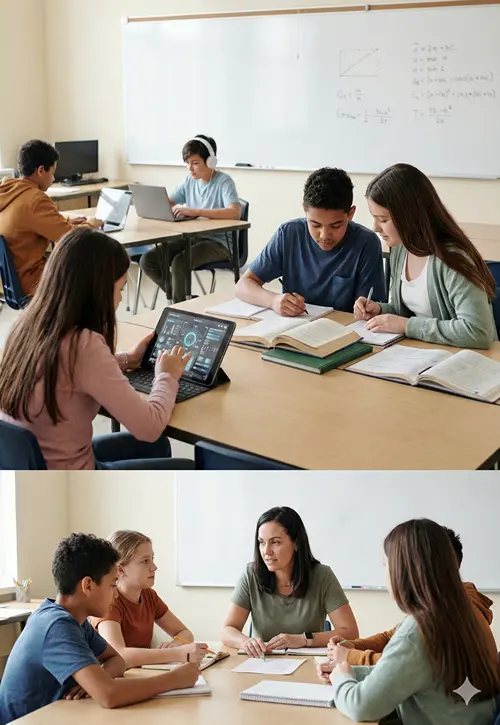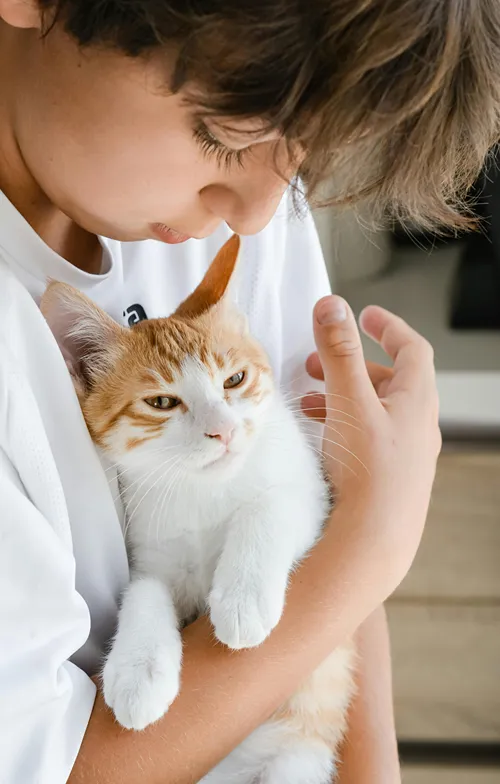How Personalized Learning Builds Confidence and Curiosity In Students
Personalized learning shifts the focus to each child’s unique pace and interests, making education tailor-made. Kids learn at their speed, not someone else’s. That can kindle confidence and keep their curiosity alive in all kinds of learning settings. When lessons match their needs, children are immersed in what engages them.
Parents see their kids light up when they explore topics they adore and conquer challenges step by step.
Moving Past the One-Size-Fits-All Routine
Ever wonder why some students tune out in class? It’s often a pace mismatch. Personalized learning hands each student the steering wheel. One child zooms through reading; another loops back on fractions until it clicks. That flexibility cuts frustration and shows effort really does pay off.
Children begin to trust their abilities; each success feels earned, not handed out by comparison. They learn that progress isn’t a race against someone else. It’s proof of their own growth. And when they know they won’t be left behind or held back, they tackle new material with less anxiety and more gusto.
Giving Curiosity Room to Breathe
Kids aren’t blank slates; they’re bursting with questions and curiosity. Personalized learning shifts “cover the syllabus” into “follow what fascinates you.” A child fascinated with marine life can focus on ocean ecosystems, while another enamored with stars dives into astronomy modules. It’s like handing them a map of their own interests.
Digital tools chip in, suggesting fresh lessons based on what grabbed their attention yesterday. So, assignments feel less like chores and more like treasure hunts. Then comes the best part: After school, they’ll hunt articles, watch videos, even ask their own “what if?” questions because curiosity has taken the driver’s seat.
Building Confidence One Small Win at a Time
Confidence doesn’t come bundled in a single package. It’s an aggregation of countless tiny victories — the tricky problem solved, the new skill mastered. The small wins. The big wins. Personalized platforms often include progress trackers or dashboards that celebrate these moments. students get to mark off goals and see improvement in real time.
They learn, really learn, what matters. Teachers point out these wins too, helping students set fresh, bite-sized targets that fit their journey. Over time, that steady stack of achievements becomes more than knowledge; it becomes an inner voice saying, “I’ve got this.” And that kind of self-assurance? It spills into sports, hobbies, friendships; everything feels a bit more doable.
Letting Creativity in Students Take the Lead
Rigid assignments can smother creativity in students. Differentiated learning pries that window open. Instead of every child writing the same essay, one might craft a digital story, another sketch an interactive infographic, and a third record a brief podcast.
Online platforms add multimedia tools — video editors, coding sandboxes, design apps — so ideas aren’t boxed in by paper. That freedom turns learning into creation. Kids realize their unique voices matter. And when they see their work valued, they aren’t afraid to experiment next time either. Creative confidence? It becomes second nature.
Keeping Emotional Safety Front and Center
Learning isn’t just intellectual; it’s emotional, especially online. Personalized setups help maintain a supportive vibe by avoiding public comparisons. If a student struggles, it happens privately, not on a big screen in front of classmates.
Teachers drop in with check-ins via small group instruction offering encouragement and guiding healthy screen habits. Parents get peace of mind knowing their child isn’t lost in a crowd but gets individual care and learns to manage online responsibilities safely. This blend of tech and touch matters more than you might think.
Turning Habits Into Lifelong Learning
Here’s the kicker: Personalized learning doesn’t stop with report cards. It builds habits that carry into life: goal-setting, progress tracking, and curiosity following. A student might wake up thinking about their next coding challenge or browse articles on wildlife conservation after dinner.
That self-driven approach sticks. Learning stops being something done to you; it becomes something you choose. And in a world that never stops changing, that knack for adapting and exploring becomes the real superpower.
Personalized learning isn’t a magic solution for every classroom learning scenario. Every situation is different, which is why teachers need to be so agile in their teaching methods. It’s just one of many reasons why teachers are so highly valued, but it’s a game changer from the perspective of confidence and curiosity.
When children are given even a little power to drive their own progress, supported by safety nets and tailored tools, they build lifelong skills and belief in themselves is nurtured. Those kinds of things are lasting, and they make a noticeable difference in the way a child engages with the world, with the learning environment, and with themselves. That matters.
Parents seeking to boost their child’s love of learning and sense of agency should explore programs that put personalization first. After all, education feels different when it fits just right, and that’s when growth really takes off.
SOURCES
https://www.apu.apus.edu/area-of-study/education/resources/the-benefits-of-personalized-learning/
https://www.ocasa.org/news/personalized-learning-in-action-how-ocasa-helps-every-student-thrive
https://pmc.ncbi.nlm.nih.gov/articles/PMC10255677/
www.researchgate.net/publication/372239102_Increasing_Children’s_Self-Confidence_through_Parenting_Management_Perspective









